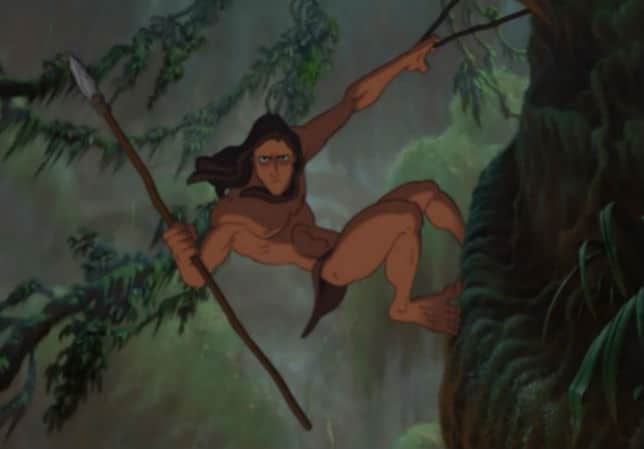
Welcome to Revisiting Disney! This week, we’re looking at that Disney movie that will always be in your heart, Tarzan! Like always, I have labeled each category so if you want to skip to the parts that interest you most, feel free. And, of course, if you have any thoughts, burning or otherwise, please share in the comments!
BACKGROUND OF TARZAN
Released on June 18th, 1999, Tarzan is another Disney film based on a popular legend and adapted to cartoon form. It also seems to be another story that is both made for Disney, and not the typical Disney fare. We’ll come back to that. Tarzan is listed as the last official film in the Disney Renaissance, which is seen as technically beginning with The Little Mermaid back in 1989. The ten-year spree gave us some wonderful movies and ones that hold a special place in my heart (for good or ill).
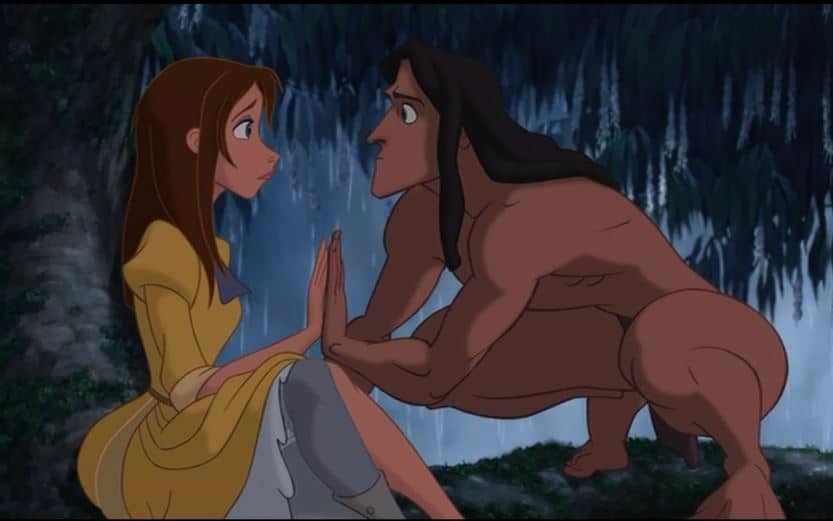
Tarzan marks the end of the Disney Renaissance because it was the last Disney film to win an Academy Award until 2012 when Paperman would win for Best Animated Short Film. In addition, Tarzan was number one at the box office in America when it opened, and it was the first Disney film since Pocahontas to win an Academy Award (how did The Hunchback of Notre Dame not win an Oscar?! Or Mulan? Oh well, such is life). With a very catchy soundtrack and some stunning animation, Tarzan shows how much animation was changing in the 1990’s.
MUSIC
The music in Tarzan is very different from other films of the time, in that Phil Collins (a member of the Songwriters Hall of Fame, drummer, singer, songwriter, and a multi-million album selling artist) wrote and performed the music.
The idea here was that having the songs sung by an outside source would move away from what people have called the “show tunes” style, where every Disney movie is arranged like a Broadway musical. Personally, I like show tunes, but this works well for the movie Tarzan.
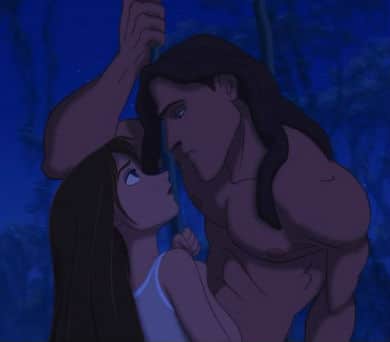
The score was composed by Mark Mancina, and his score beautifully complements Collins’ work. The heavy percussion and the lack of show-stopping musical numbers by characters both work well to convey the mood of the film; it lends a darker and more violent feel to it when necessary. It’s not bad, it’s just different. The music is catchy and still drives the plot while also being the sort of music you just have to tap your toe to.
That Academy Award that Tarzan won? It came from the score; Phil Collins won an Academy Award and a Golden Globe in 2000 for “You’ll Be In My Heart” (Best Music, Original Song and Best Original Song-Motion Picture, respectively).
ANIMATION
Tarzan, according to some sources, was a perfect story to be adapted as an animated film because of the way Tarzan moves. The movements are so smooth and the character moves in such a unique way, that there was doubt whether or not an actual human could move that way. We’ll have to see how the live-action Tarzan does, but at the time, animation allowed the team to play with it.

Tarzan’s movements were based on pro-skaters, including that of Tony Hawk. Glen Keane, the supervising animator of Tarzan, was supposedly inspired by his son’s interest in surfing and skateboarding (and those moves) to create how Tarzan moves through the jungle. This also modernizes the legend, in some ways, and is a neat artistic choice.
Tarzan uses what is called the “Deep Canvas” 3D effect that blends in 2D characters, while also allowing for more spin, for lack of a better word. The backgrounds in Tarzan are very striking and life-like. The Disney Studio also used the CAPS system for the animation.
Overall, Tarzan is a really pretty movie, and I think it has a unique look that sets it apart from other Disney films. Sometimes, though, it can make you dizzy. Yes, you can do 3D. Stop it!

Tarzan himself is an interesting animated character. The animators hired an anatomy professor to make sure Tarzan was a correctly built animated character. He would add the correct muscles for Tarzan on top of the sketches, which allowed for more realistic movements for Tarzan’s muscles.
My favorite trivia is that some guy complained that the animation on Tarzan might give little boys unrealistic body expectations. Please. If anyone lived a jungle surfing life in an animated paradise where they fight snakes and leopards on a daily basis, they might look like Tarzan.
PLOT
The story of Tarzan as told by Disney starts off with the stories of two different families touched by loss, a gorilla couple whose baby is eaten by a leopard, and a marooned human couple who are killed in their amazing tree-house, leaving their baby orphaned. The little guy is found and saved by Kala, the mom gorilla, though not embraced by Kerchack, the dad gorilla, and leader of the family.

As Tarzan grows up, he struggles to fit into his family, despite being the “hairless wonder.” When he finally seems to have found acceptance and his place in his family, the jungle is visited by a new species of people. When he encounters the lovely Jane Porter, Tarzan’s life is thrown into chaos and confusion.
Jane teaches Tarzan how to read and speak English, and in turn, Tarzan teaches her about the jungle. While Jane and her father are trying to study the gorillas, their guide Mr. Clayton is trying to trap the gorillas for his own purposes. Tarzan is intrigued and begins to wonder if he does belong with the apes or with the humans.
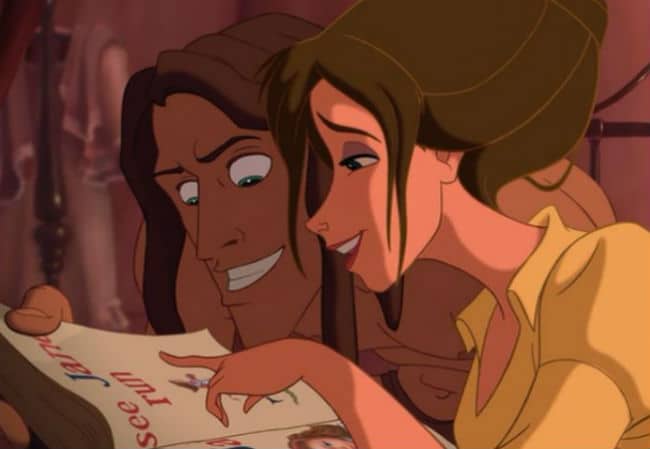
After being tricked into giving away the location of the gorilla’s nest, Tarzan is in a bit of trouble at home. When Jane offers to take him with her to London, he is torn between leaving his family and leaving Jane.
Although Tarzan decides at first to go with Jane and her father, even boarding the ship, Clayton shows his true colors before the ship leaves. Tarzan, with the help of his friends, manages to escape and save his family. However, Clayton doesn’t make it easy for him. When Kerchack dies saving Tarzan’s life, he acknowledges Tarzan as his son. Did you ever think the death of a cartoon gorilla would make you cry? Me either.
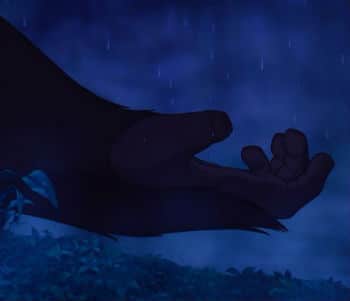
Tarzan now has to stay in the jungle with his family, and Jane has to decide whether to do the proper thing and go back to London or to follow her heart and stay with Tarzan. Of course, she chooses to stay with Tarzan, and her father stays too (so Jane really doesn’t have to give anything up). They all live happily ever after, I assume.
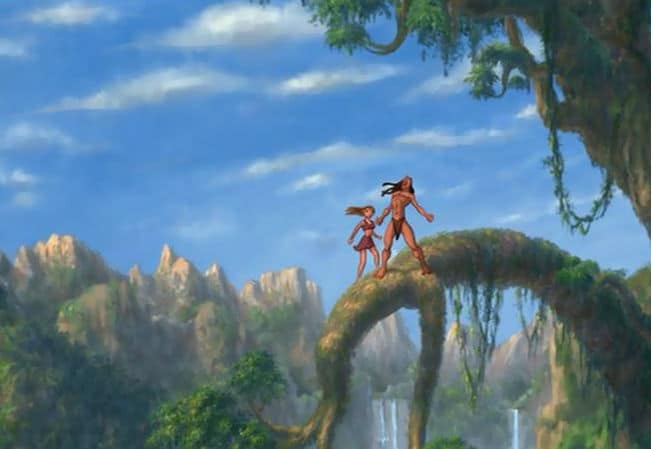
SOURCE MATERIAL
Tarzan was based on the Edgar Rice Burroughs’ story, Tarzan of the Apes. The book was published in 1914, and honestly is one of the few books that I will say I prefer the movie adaptation of. There are lots of similarities to other stories: orphan boy adopted by apes/gorillas, meets girl, falls in love with girl, girl loves him, they’re in Africa. It’s your standard adventure story.
However, the book is clearly a product of its time (which makes it fascinating on its own), with lots of details that Disney left out to make the story more family-friendly. This, with the additional humor, makes a different film than a perfect adaptation of the book would.
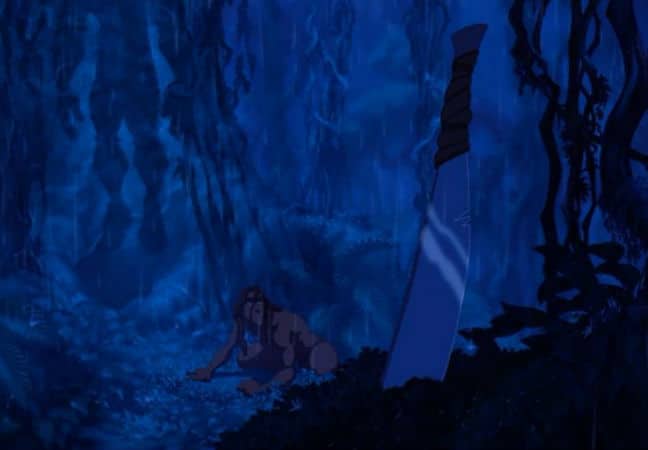
In the book, Tarzan is actually a noble and Clayton is his heir, so Tarzan could be fabulously wealthy very easily. Jane and her father are also Americans, and they bring a slave with them on their trip. Clayton’s villainy in the book really comes down to the fact that he wants to marry Jane, and she knows that by marrying him, she can save her father from poverty. However, she’s been falling in love with the penniless Tarzan who was raised in the jungle, which complicates everything.
It’s a wonderful adventure story, but I was very saddened by the lack of a happy ending (it’s built for sequels), so that was my personal issue with the source material. If you want to give it a read, it’s on Amazon as both a Kindle book and a paperback.
The story of Tarzan, it seems, is always being adapted. According to the Internet Movie Database, Tarzan’s story has been adapted more times than any other story except Dracula.
That’s crazy. We’ve adapted Tarzan more than King Arthur, more than Beauty and the Beast. It’s the fun kind of story that lends itself to lots of different adaptations, though, and the Disney version can be seen as another in a proud film and television tradition. I feel like I’ve been saying that a lot lately, but Disney does a lot of “twists on an old favorite” films, and they’re always fun.
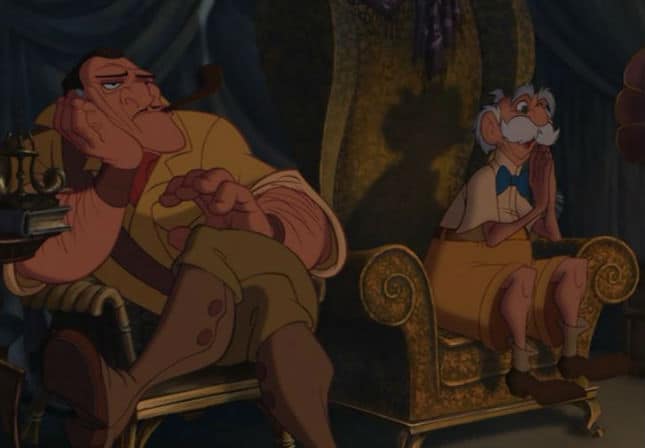
(Still of Professor Porter and Clayton)
Tarzan has given rise to other adventure stories, like the more humorous George of the Jungle, but something about the child raised in the wild and the adventures he has because of that childhood seems to stick with us. Could a boy raised by apes find love and save his family? I only read the first book, but I’m inclined to say yes. Written for the adventurer in all of us, Tarzan is a solid adventure tale by a talented writer.
The 1990’s
In 1999, I remember hearing a lot of buzz about this Y2K thing, that was going to cause all the computers to crash in confusion (because of the reset). Was this really what Y2K was? I’m still not sure, but I remember the whole “New Millennium” thing very clearly as being exciting (and maybe meaning the world was about to end).
On a more serious note, 1999 was also the year of the massacre at Columbine High School in Colorado, where two students shot 13 of their classmates before killing themselves. This was a horrible event that remains part of many people’s memories.
Politically, this was the year that Prince Edward married commoner Sophie Rhy-Jones, Queen Elizabeth opens up the first Parliament in Scotland in about 300 years, the Impeachment Process against President Bill Clinton begins, Vladimir Putin becomes the President of Russia, Australia votes to stay part of the British Empire, New Zealand elected its first female Prime Minister (Helen Clark) and Osama bin Laden sets up his base in Afghanistan.
There were deadly floods in Venezuela, Russia launched an offensive against Chechnya, there were natural disasters in Vanuatu, a rail crash in London, earthquakes in Taiwan and Greece, a tornado in Oklahoma, and floods in Mexico. Basically, it was another standard year, in that a lot of people died due to natural disasters, and a lot of people died from people being awful to each other, but there were good things that happened too.
Maybe the use of old legends reminds people of the human spirit to rise up from the ashes of sadness and despair? These stories are escapism, sure, but they all feature strong characters who have had horrible times in life and rise above it. Of course, I might be reading too much into this, and they’re just fun stories, but where’s the fun in that?
LESSONS LEARNED
Tarzan teaches several lessons, one being that families don’t always look the same. Tarzan doesn’t look like his adopted mother Kala or the rest of his family, but that doesn’t mean that they aren’t family. I suppose an additional lesson to that is families can be made up of anyone who cares about each other.

The other big lesson is that our differences are not as important as the things that make us the same, which is a good lesson. Also, there is nothing wrong in being unique. The things that make us different also make us special.
Another major lesson is that sometimes love doesn’t make sense. It doesn’t make logical sense for Jane to stay in the jungle with Tarzan, but it makes less sense for her to leave. It’s super sweet, and they are an adorable cartoon couple.
Finally, there are no piranhas in Africa. And just because the water looks questionable, doesn’t mean it isn’t sanitary.
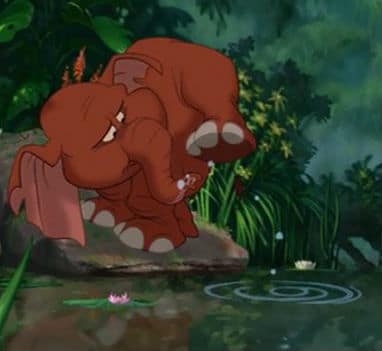
DOES IT HOLD UP?
Tarzan is a fun movie that takes advantage of fun source material and new technologies to make an action-packed film with just enough romance. Tarzan and Jane’s romance never overwhelms the story, it just makes it more compelling. Sometimes, it feels like the 3D backgrounds are a little much, but overall, the pieces of the film work really well together to make a solid ending to the (second) Disney Renaissance.
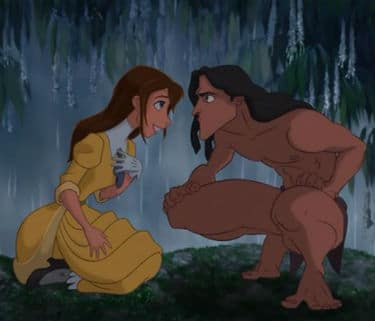
Photos: Disney
For next week: Fantasia 2000 & Dinosaur
If you enjoyed this post and the others in the Revisiting Disney series, and have found yourself wishing that you could find them all in one convenient and bound book with eight extra essays, there is an option for you! Check out A Journey Through Disney: My Look Back Through Disney Canon, now available on Amazon as both a Kindle book ($4.99) and a paperback ($11.99).
OTHER SOURCES:
https://thewaltdisneycompany.com/about-disney/disney-history
http://www.imdb.com
http://studioservices.go.com/disneystudios/history.html
http://www.thepeoplehistory.com/1999.html
http://www.kidzworld.com/article/4255-1990s-timeline
Bailey, Adrian. Walt Disney’s World of Fantasy. Everest House Publishers. New York, New York. 1982.
Finch, Christopher. The Art of Walt Disney: From Mickey Mouse to the Magic Kingdom. Harry N. Abrams, Inc. New York, New York. 1975.
Johnston, Ollie and Frank Thomas. The Disney Villain. Hyperion. New York, New York. 1993.
Thomas, Bob. Disney’s Art of Animation From Mickey Mouse to Hercules. Hyperion. New York, New York. 1992.
ARE YOU A ROMANCE FAN? FOLLOW THE SILVER PETTICOAT REVIEW:
 Our romance-themed entertainment site is on a mission to help you find the best period dramas, romance movies, TV shows, and books. Other topics include Jane Austen, Classic Hollywood, TV Couples, Fairy Tales, Romantic Living, Romanticism, and more. We’re damsels not in distress fighting for the all-new optimistic Romantic Revolution. Join us and subscribe. For more information, see our About, Old-Fashioned Romance 101, Modern Romanticism 101, and Romantic Living 101.
Our romance-themed entertainment site is on a mission to help you find the best period dramas, romance movies, TV shows, and books. Other topics include Jane Austen, Classic Hollywood, TV Couples, Fairy Tales, Romantic Living, Romanticism, and more. We’re damsels not in distress fighting for the all-new optimistic Romantic Revolution. Join us and subscribe. For more information, see our About, Old-Fashioned Romance 101, Modern Romanticism 101, and Romantic Living 101.


I still love this movie so much, haha. I didn’t realize that Tarzan was the last film of the Disney Renaissance but it definitely makes sense. Also I had no idea that Tarzan was adapted so many times! I still think this version is the best (and perhaps will always be, hehe) adaptation of the Tarzan story. I also like this movie better than the book. The book was fun to read, however I was bothered by so many strange occurrences that happened in the book that didn’t make any sense to me, lol. Great review, Bailey!